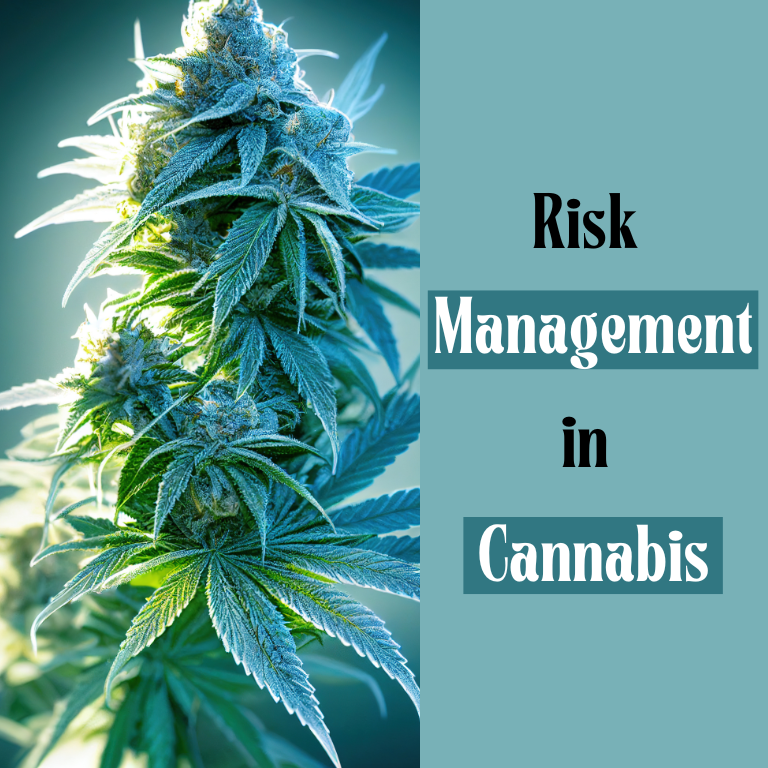Safeguarding Cannabis Operations: Effective Natural Disaster Risk Management

Natural disasters pose significant risks to all industries, and the cannabis sector is no exception. As the industry continues to grow, it’s crucial for cannabis businesses to develop comprehensive risk management strategies to protect their operations from the impact of natural disasters. This article explores the importance of natural disaster preparedness for cannabis businesses and offers practical steps to mitigate risks.
The Importance of Preparedness
Cannabis businesses face unique challenges when it comes to natural disaster preparedness. The high-value nature of cannabis products, the regulatory environment, and the reliance on controlled growing conditions make risk management essential. Without proper planning, natural disasters can lead to significant financial losses, supply chain disruptions, and even compliance issues.
Steps for Effective Risk Management
Risk Assessment Conduct a thorough risk assessment to identify potential natural disasters that could impact your operations. This includes understanding the likelihood of events such as floods, wildfires, earthquakes, and hurricanes in your area. Assessing vulnerabilities in your supply chain, infrastructure, and workforce is also crucial.
Emergency Response Plan Develop a comprehensive emergency response plan that outlines the actions to be taken before, during, and after a natural disaster. This plan should include evacuation procedures, communication protocols, and responsibilities for key personnel. Regularly update and practice the plan to ensure all employees are prepared.
Insurance Coverage Ensure your business has adequate insurance coverage to protect against natural disasters. This includes property insurance, business interruption insurance, and crop insurance for cannabis cultivation operations. Work with an insurance provider experienced in the cannabis industry to tailor coverage to your specific needs.
Infrastructure Resilience Invest in resilient infrastructure to minimize damage from natural disasters. This includes reinforcing buildings, securing equipment, and implementing flood protection measures. For cultivation facilities, consider backup power solutions to maintain environmental controls during power outages.
Supply Chain Diversification Diversify your supply chain to reduce reliance on a single supplier or region. Establish relationships with multiple suppliers and distributors to ensure continuity of operations in the event of a disruption. This can help maintain product availability and minimize financial losses.
Natural disaster preparedness is a critical aspect of risk management for cannabis businesses. By conducting thorough risk assessments, developing comprehensive emergency response plans, securing adequate insurance coverage, investing in resilient infrastructure, and diversifying the supply chain, cannabis businesses can protect their operations and ensure long-term success. Preparedness not only safeguards the business but also contributes to the overall resilience and stability of the cannabis industry.
Frequently Asked Questions (FAQs)
Q1: What should be included in a cannabis business’s emergency response plan?
A1: A comprehensive emergency response plan should include evacuation procedures, communication protocols, roles and responsibilities of key personnel, emergency contact information, and procedures for protecting valuable assets. Regular drills and updates to the plan are also essential to ensure preparedness.
Q2: How can insurance help mitigate the impact of natural disasters on cannabis businesses?
A2: Insurance provides financial protection against the losses caused by natural disasters. Property insurance covers damage to physical assets, business interruption insurance compensates for lost income during downtime, and crop insurance protects cannabis crops. Adequate insurance coverage helps businesses recover more quickly and reduce financial strain.
Q3: Why is supply chain diversification important for cannabis businesses?
A3: Diversifying the supply chain reduces the risk of disruptions from natural disasters affecting a single supplier or region. By having multiple suppliers and distributors, cannabis businesses can ensure a steady supply of products and materials, maintain operations, and mitigate financial losses in the event of a disruption.











